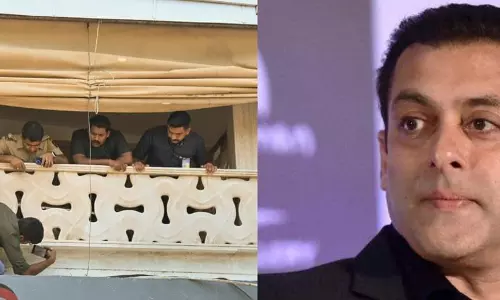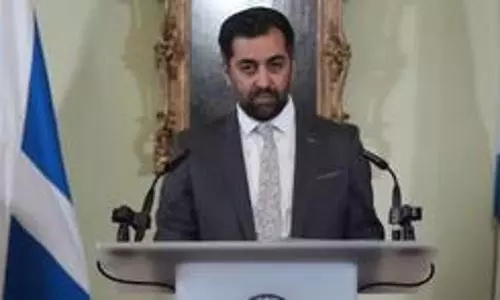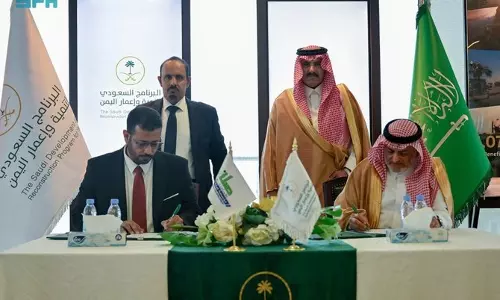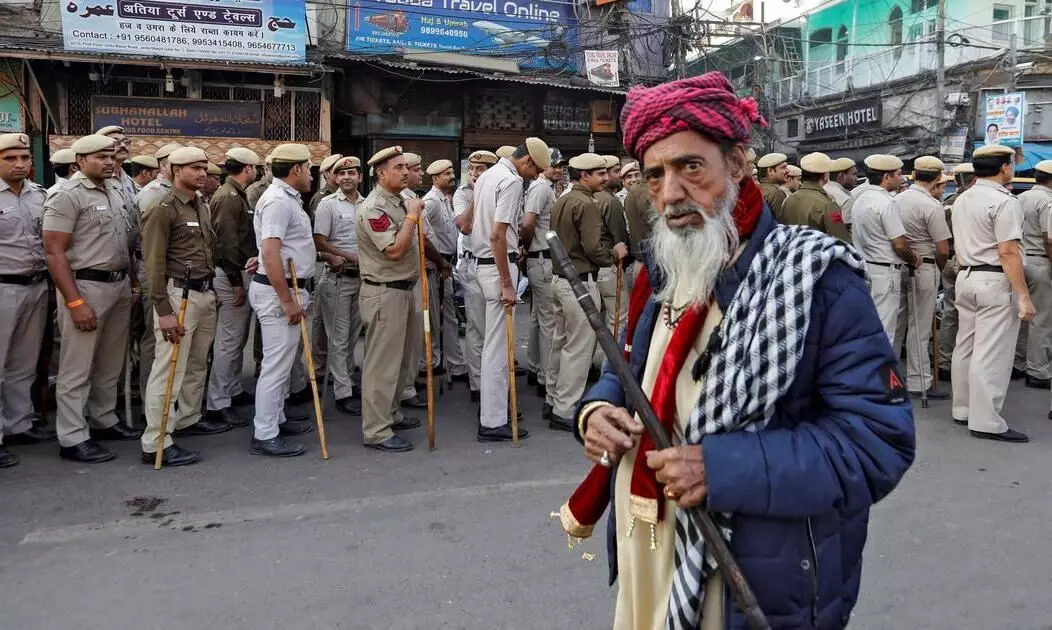
Are Muslims in Ayodhya feeling safe?
text_fieldsReuters photo.
Ayodhya: Gun-totting khakhi-clad cops of UP’s Provincial Armed Constabulary (PAC) patrolling up and down the critical streets of this temple town are in sharp contrast to the excitement and fervour that is all pervading in and around Ayodhya, where all roads lead to the Ram Temple set to be pompously inaugurated by Prime Minister Narendra Modi on January 22.
Eerie silence seems to prevail particularly in a few of the lanes and bylanes, known to be dominated by Muslims, who are stated to be not more than 5,000 in the old Ayodhya town, among the four lakh Muslims residing in the entire erstwhile Faizabad district (now renamed Ayodhya).
And it appears quite distinctly that the khakhi-clad are in much larger numbers along streets overlooking any part of the temple construction activity. And one such locality is Daurai Kuan while another is Dharam Kanta Panjitola, where unusual police surveillance is quite visible.
The official explanation is that cops in these localities are deployed simply because these localities are closer to the outer iron fencing around the new temple. However, residents of the area have reason to believe that the police is maintaining extra surveillance because of larger presence of Muslims there.
And they allege they are under constant intimidation and fear of losing their homes, where they have been living for generations. Quite a few of them had moved out in December 1992, when the 16th century Babri Masjid was demolished by communally charged Hindu mobs, who also vandalized some mosques and commercial establishments owned by members of the minority community in these very areas.
“Once bitten twice shy”, is what seems to rule their psyche now in the run-up to the temple construction, which has drawn enormous crowds from different corners of the country and are camping in every nook and corner of the town, literally painted in the typically Hindu saffron hue, with conch shells, bhajans and cries of ‘Jai Shri Ram’ reverberating everywhere.
A few houses have already been pulled down after payment of compensation to the Muslim owners, who, in any case, had no choice but to accept and quit. But what is undeniable is that fear is lurking in the minds of Muslim families who are still living there. While older residents choose to maintain studied silence, the younger lot seems to be vocal in expressing their apprehension.
“The house of one of our neighbours was demolished a few days back, and I will not be surprised if our turn comes next any time; don’t know where my parents and I will go” , observed a 16-year-old while pointing towards the debris of a house close by.
Another school-going girl drew this scribe’s attention towards the huge contingent of policemen sprawling all along the road. “it seems we are constantly being watched”, she reluctantly remarked. An elderly woman, who refused to divulge her name
sought to add, “we have been told not to entertain any guest from outside; and we are required to inform the police if any guest comes to stay with us”.
However, a well-known local Muslim, representing a socio-religious group sought to clarify that the administration had assured complete safety. “I have personally conveyed the apprehensions of the people of this locality through a formal written application to the Inspector General of Police, who has categorically assured me that no Muslim living here will be harassed”, said Mohamad Azam Qadri, who heads the local Sub-Committee of UP Sunni Central Waqf Board, besides playing an active role as leader of another Muslim welfare organization.
According to him, ”compensation is being duly paid to those whose properties have been acquired by the government”. Asked if there was any kind of discrimination in the payment of compensation between Hindus and Muslims, he said, “No, there is no discrimination on the basis of faith, but the compensation varies between owners and tenants. You see some properties are owned and others rented, so there is bound to be some difference on that basis.
Qadri feels, “If the administration and the police remain strict, vigilant and unbiased, then we have nothing to fear, but considering what Muslims have gone through in 1992, when the administration refused to remain fair, there is palpable fear.”
Thirty-six-year-old Meraj, who makes ‘Kharauns’ (special wooden footwear worn by Hindu religious priests), also lives in Panjitola - a Muslim-dominated locality in Ayodhya. His tiny little home-cum-workshop also falls right behind one of the outer fencings of the new Ram temple, from where cops perched on tall watch-towers keep a constant vigil on the area. His 70-year-old mother, Mehrunissa, looks quite worried and fearful about the men in khakhi. “We can even sit freely outside and just don’t know what will happen any minute; I keep praying to Allah for our safety”.
An old mosque on the main road in the locality has been on the VHP target and several efforts have been made to take it over. “The VHP had even managed to have an agreement to sell signed by a masjid official but residents of this area raised protests following which it has been put on hold for the time being”, she pointed out.
Meanwhile, the administration has managed to win over some prominent Muslims of the area. And that includes Iqbal Ansari, the son of the late Hashim Ansari, who fought for the Babri Masjid for more than six decades before he died. Iqbal gained prominence only as son of the “oldest Muslim litigant in the Babri case”, but evidently he appears to be totally compromised. And sure enough he comes in handy for BJP, VHP and also the temple trust officials to be projected as the ultimate Muslim voice from Ayodhya. He is often seen and heard singing paeans and showering praises for Prime Minister Narendra Modi, UP Chief Minister Yogi Adityanath and other BJP-VHP leaders, crediting them with the construction of the much-awaited Ram temple. But surely, that is not how most Muslims in the temple town feel.























